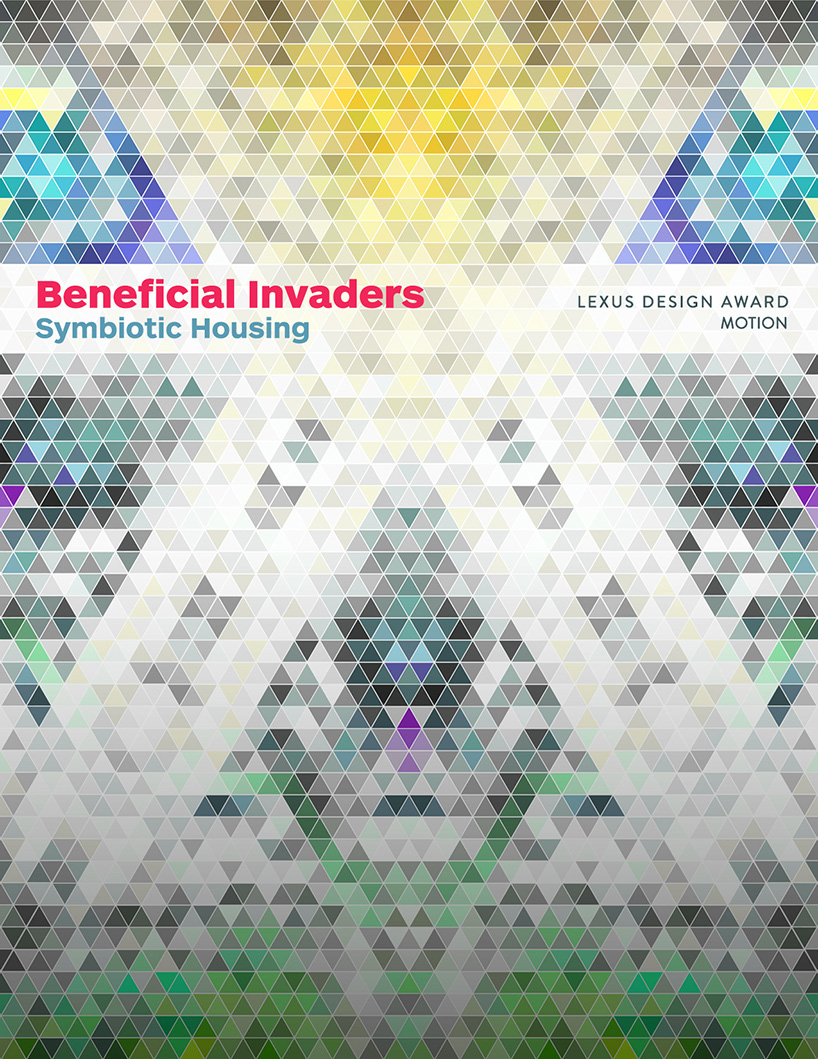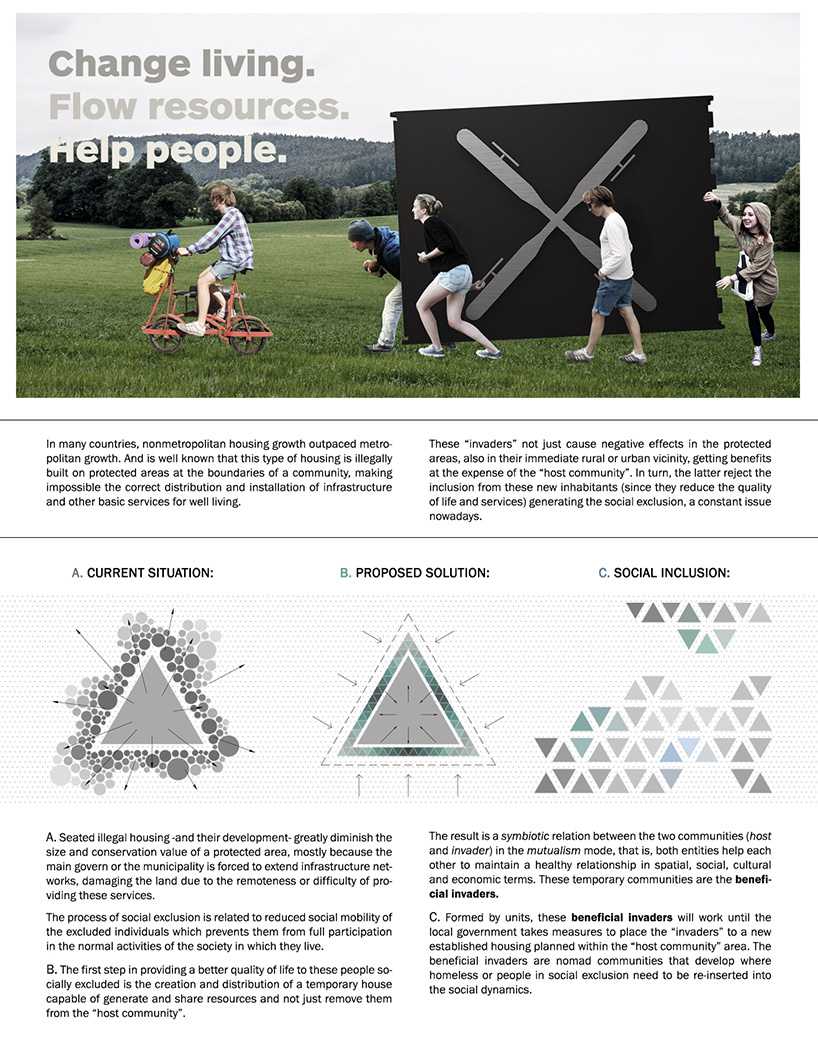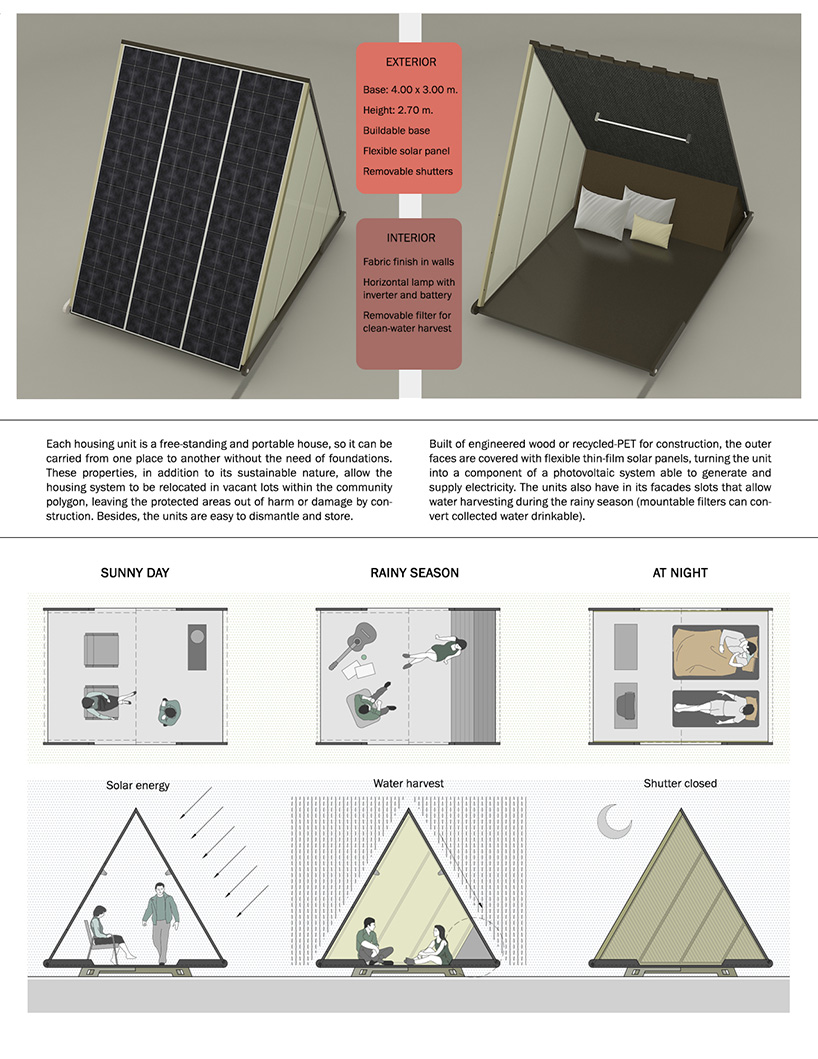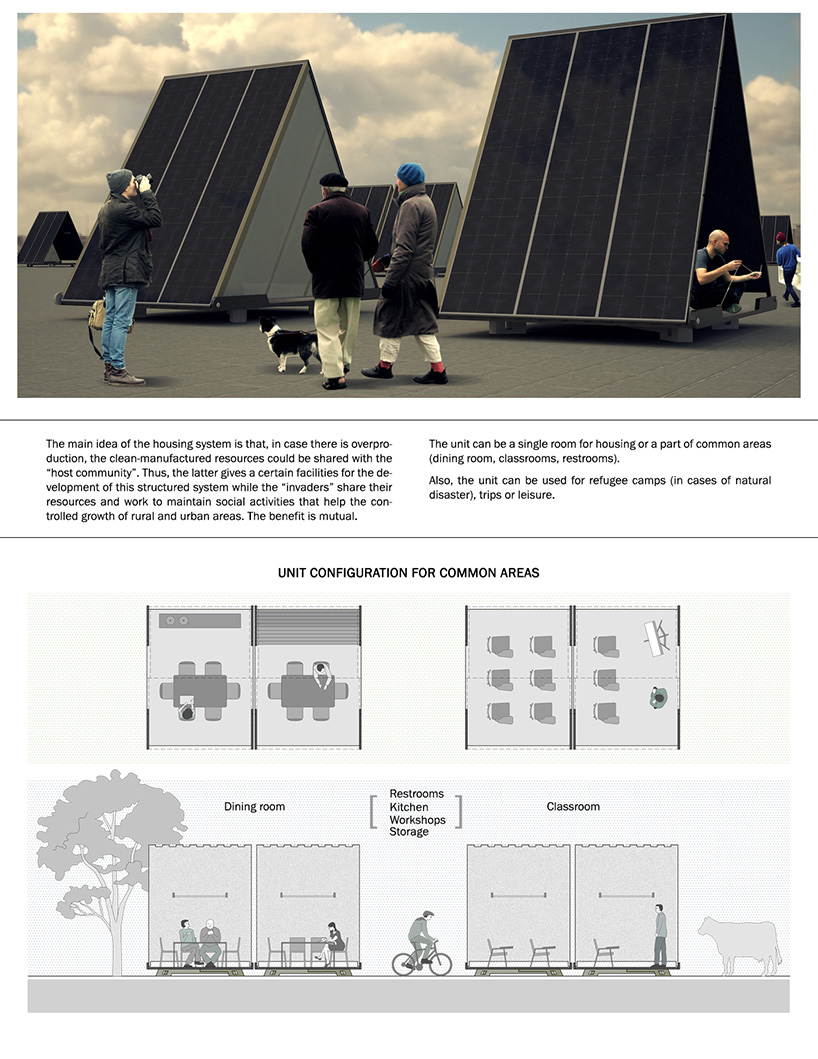
beneficial invaders symbiotic housing by Oliver Tellez from mexico
designer's own words:
Beneficial Invaders
Symbiotic Housing
In many countries, nonmetropolitan housing growth outpaced metropolitan growth. And is well known that this type of housing is illegally built on protected areas at the boundaries of a community, making impossible the correct distribution and installation of infrastructure and other basic services for well living. These “invaders” not just cause negative effects in the protected areas, also in their immediate rural or urban vicinity, getting benefits at the expense of the “host community”. In turn, the latter reject the inclusion from these new inhabitants (since they reduce the quality of life and services) generating the social exclusion, a constant issue nowadays.
1º Problem
Protected areas are crucial for biodiversity conservation because they provide safe havens for species threatened by land-use change and resulting habitat loss. Seated illegal housing -and their development- greatly diminish the size and conservation value of a protected area, mostly because the main govern or the municipality is forced to extend infrastructure networks, damaging the land due to the remoteness or difficulty of providing these services. Also, we must add to the list the generation of waste and polluting materials, which directly affect environmental conservation.
2º Problem
Homelessness and social exclusion emerged as a great problem. The process of social exclusion is related to reduced social mobility of the excluded individuals which prevents them from full participation in the normal activities of the society in which they live. These have led to the poorest households to have little choice but to live in adverse conditions, spatially and socially. Therefore, the “host community” associates the excluded individuals with many social problems like vandalism, crime and pollution, result of the low levels of education achieved, unemployment and deteriorated standard of living and housing stock.
Proposed solution: Beneficial invaders
Given the above described, the first step in providing a better quality of life to these people socially excluded is the creation and distribution of a temporary house capable of generate and share resources and not just remove them from the “host community”. The result is a symbiotic relation between the two communities (host and invader) in the mutualism mode, that is, both entities help each other to maintain a healthy relationship in spatial, social, cultural and economic terms. These temporary communities are the beneficial invaders.
Formed by units, these beneficial invaders will work until the local government takes measures to place the “invaders” to a new established housing planned within the “host community” area. The beneficial invaders are nomad communities that develop where homeless or people in social exclusion need to be re-inserted into the social dynamics.
Each housing unit is a free-standing and portable house, so it can be carried from one place to another without the need of foundations. These properties in addition to its sustainable nature, allow the housing system to be relocated in vacant lots within the community polygon, leaving the protected areas out of harm or damage by construction. Besides, the units are easy to dismantle and store.
Built of engineered wood or recycled-PET for construction, the outer faces are covered with flexible thin-film solar panels, turning the unit into a component of a photovoltaic system able to generate and supply electricity. The units also have in its facades slots that allow water harvesting during the rainy season (mountable filters can convert collected water drinkable). The unit can be a single room for housing or a part of common spaces (diners, classrooms, restrooms).
The main idea of the eco-friendly housing system is that, in case there is overproduction, the clean-manufactured resources could be shared with the “host community”. Thus, the host gives a certain space and facilities for the development of this structured system (transport, employment, etc.) while the invaders share their resources and work to maintain social activities that help the controlled growth of rural and urban areas. The benefit is mutual.
Cover  Analysis
Analysis  Beneficial invader unit
Beneficial invader unit  Beneficial invader system
Beneficial invader system